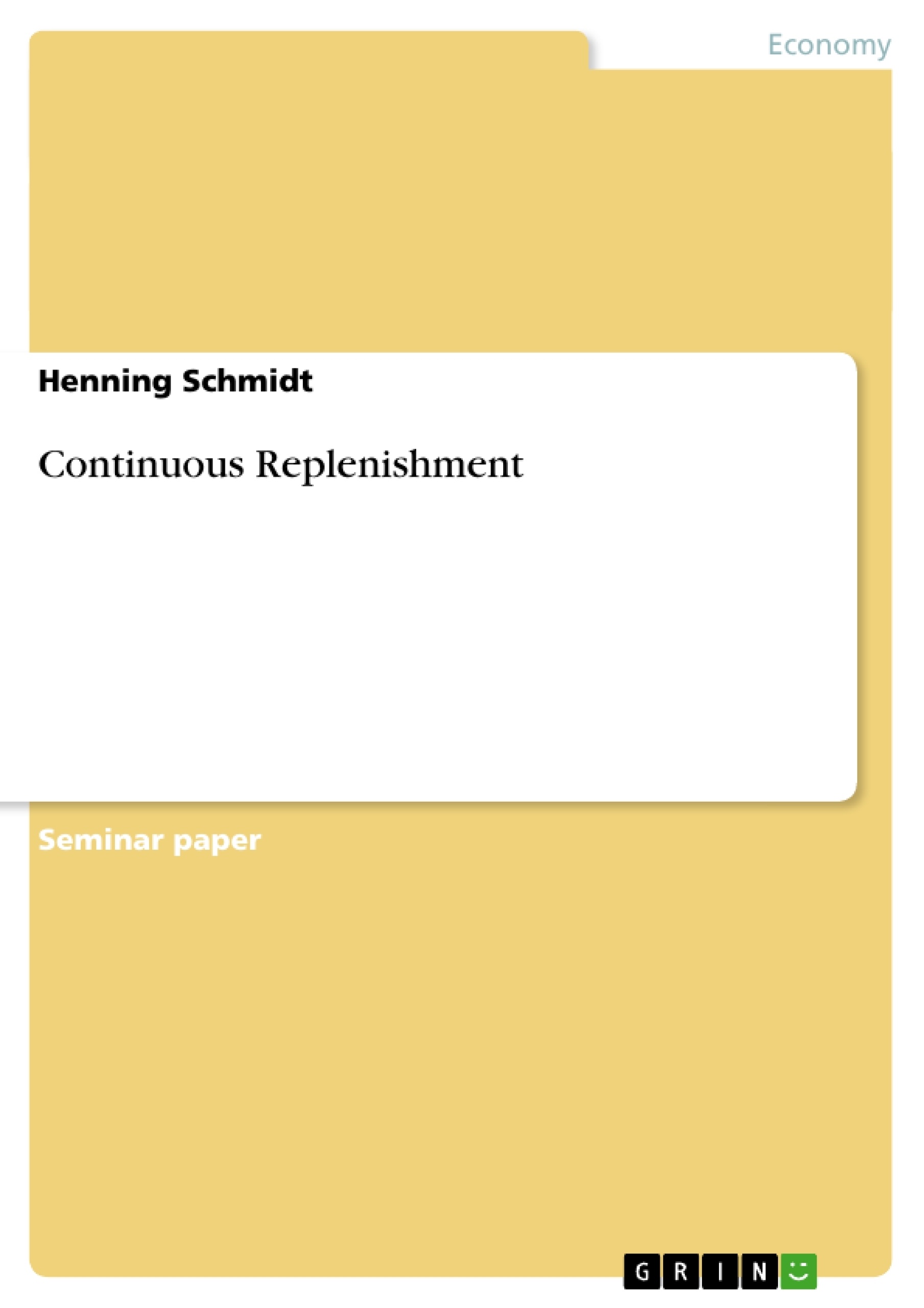This paper is to explain the concept of Continuous Replenishment (CR) which will be considered in a framework of an understanding of Supply Chain Management (SCM). A more extensive approach was chosen to ensure that the considerations contain the necessary information for a thorough understanding of the method. Initially, the general background of Continuous Replenishment will be introduced, followed by the definitions of the necessary terms. Then the approach of CR will be analysed in its components. Having explained the general concept, further determinants to the model will be introduced, e.g. regarding the size and the conduct of the related enterprises. From there, the conclusion that the success of CR depends mostly on high level managerial support will be deduced. All abbreviations will be introduced within the text and can be looked up in the glossary at the end of this paper, pictures and graphs are displayed in the appendix.
Table of Contents
- 1 Introduction.
- General Aspects of Continuous Replenishment.
- 3 Definitions and explanation of framework.
- 4 Possible models of CRP in practice.
- 5 Benefits and Costs of CRP.
- 6 Determinants of CRP outcome.
- 7 Conclusion.
- 8 Pictures and Graphs.
- 9 Glossary.
- 10 References.
Objectives and Key Themes
This paper aims to explain the concept of Continuous Replenishment (CR) within the framework of Supply Chain Management (SCM). It provides a comprehensive analysis of CR, beginning with its general background, definitions, and key components. The paper explores various models of CRP in practice, assesses its benefits and costs, and examines the determinants of its success. It concludes by highlighting the importance of high-level managerial support for achieving successful CR implementation.
- Continuous Replenishment (CR) as a concept within Supply Chain Management (SCM)
- The origins and motivations for the development of CR
- The key components and models of CRP in practice
- The benefits, costs, and challenges associated with CR implementation
- Factors influencing the success of CR implementation
Chapter Summaries
The first chapter introduces the concept of Continuous Replenishment (CR) in the context of Supply Chain Management (SCM). It highlights the historical backdrop of CR's emergence, driven by increasing competition, rapid product life cycles, and the need to effectively manage inventory in a globalized market. CR aims to enhance efficiency by optimizing information flow and fostering collaboration throughout the supply chain, ultimately seeking to improve stock availability and reduce inventory levels.
Chapter 3 delves into the framework of Efficient Consumer Response (ECR), the broader concept encompassing CR. ECR is a holistic approach that aims to enhance the entire product lifecycle, from production to point of sale (POS), by focusing on customer needs and behavior. The chapter distinguishes between the two key components of ECR: supply chain management (SCM), which focuses on logistics, and category management (CM), which focuses on marketing. It then clarifies that CR, as a part of efficient replenishment, falls under the SCM component of ECR.
Keywords
This paper focuses on the concept of Continuous Replenishment (CR) as a key aspect of Supply Chain Management (SCM). It explores the principles of Efficient Consumer Response (ECR), the broader framework within which CR operates. Other key terms include: inventory management, demand forecasting, information flow, collaboration, and supply chain optimization.
- Quote paper
- BA (Hons) Business Economics Henning Schmidt (Author), 2005, Continuous Replenishment, Munich, GRIN Verlag, https://www.grin.com/document/68512




